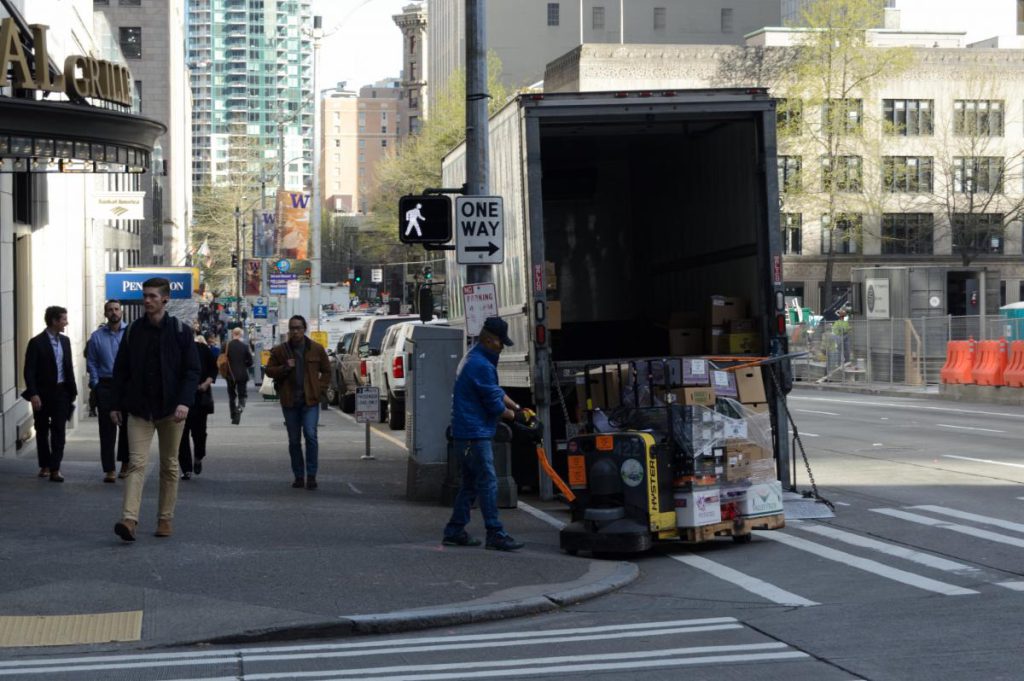
By Coral Garnick
Cities and retailers are trying to figure out how to cope and compete in the age of Amazon, when customers can have almost anything they desire within one or two hours.
That is where the University of Washington’s new Supply Chain Transportation & Logistics Center and its Urban Freight Lab come in.
The center and lab opened Wednesday. Researchers there will collaborate with the Seattle Department of Transportation and Puget Sound-area retailers, logistics companies and developers to figure out how businesses can quickly deliver to a growing number of customers when streets are already packed with freight trucks, commuters and cyclists.
Seattle is the perfect city to experiment with freight movement, due to its urban growth, geographic constraints and changing shopping habits, said Anne Goodchild, a UW associate professor and director the center. The city is home to some of the world’s largest retailers, the city’s traffic woes are well documented, apartment construction is booming and can’t keep up with demand, and Amazon Prime Now is fully operational.
SDOT has pledged up to $285,000 for the lab over the next three years to get the work off the ground. The first three companies to partner with UW and SDOT on this project are Costco (Nasdaq: COST), Nordstrom (NYSE: JWN) and United Parcel Service (NYSE: UPS). Each will give the lab $15,000 a year to participate in the project.
“We have more than 300 Nordstrom and Nordstrom Rack stores — many in dense urban settings with a range of delivery settings,” Nordstrom Director of Transportation Loren VandenBerghe said in a prepared statement. “The (center’s) efforts will be beneficial for us to glean some new best practices and actively participate in creating solutions so we can continue to do so.”
The UW will eventually invite nine other industry members to join the lab at the same $15,000 level.
The Urban Freight Lab is unique in bringing together stakeholders that manage both public and private aspects of urban deliveries. UPS and other freight carriers, for instance, can use sophisticated technologies to manage their own operations and run their own warehouses, but it’s another story once a truck hits a city street, Goodchild said.
“The problems where we can be of most value occur where a private company has to use public space,” she said in a prepared statement. “It’s a problem that isn’t going to solve itself and no one can solve independently.”
As an initial research question, the lab will focus on the last leg of a delivery, between when delivery drivers find a place to park and when they hand off a package in a private building.
Students and researchers will first map existing freight infrastructure like private loading bays, as the city doesn’t have complete information about where those exist, and document how deliveries are managed in the real world.
Eventually, the research team along with industry members will test and simulate new solutions in urban freight delivery, identify future research priorities, analyze how things are working now, and will develop an “Urban Freight Score” to evaluate the ability of trucks to access different locations around Seattle.